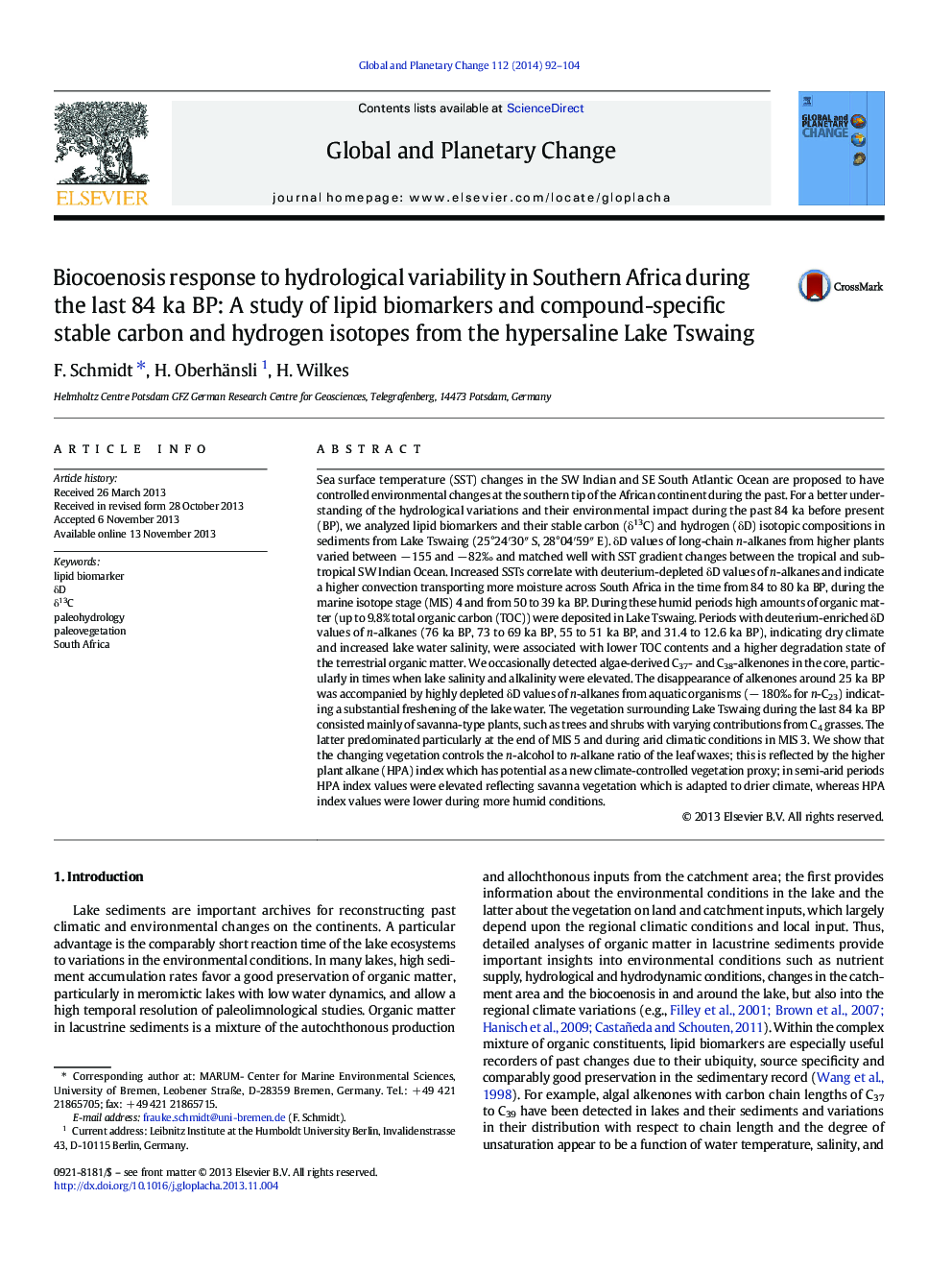| Article ID | Journal | Published Year | Pages | File Type |
|---|---|---|---|---|
| 6348229 | Global and Planetary Change | 2014 | 13 Pages |
Abstract
Sea surface temperature (SST) changes in the SW Indian and SE South Atlantic Ocean are proposed to have controlled environmental changes at the southern tip of the African continent during the past. For a better understanding of the hydrological variations and their environmental impact during the past 84 ka before present (BP), we analyzed lipid biomarkers and their stable carbon (δ13C) and hydrogen (δD) isotopic compositions in sediments from Lake Tswaing (25°24â²30â³ S, 28°04â²59â³ E). δD values of long-chain n-alkanes from higher plants varied between â 155 and â 82â° and matched well with SST gradient changes between the tropical and subtropical SW Indian Ocean. Increased SSTs correlate with deuterium-depleted δD values of n-alkanes and indicate a higher convection transporting more moisture across South Africa in the time from 84 to 80 ka BP, during the marine isotope stage (MIS) 4 and from 50 to 39 ka BP. During these humid periods high amounts of organic matter (up to 9.8% total organic carbon (TOC)) were deposited in Lake Tswaing. Periods with deuterium-enriched δD values of n-alkanes (76 ka BP, 73 to 69 ka BP, 55 to 51 ka BP, and 31.4 to 12.6 ka BP), indicating dry climate and increased lake water salinity, were associated with lower TOC contents and a higher degradation state of the terrestrial organic matter. We occasionally detected algae-derived C37- and C38-alkenones in the core, particularly in times when lake salinity and alkalinity were elevated. The disappearance of alkenones around 25 ka BP was accompanied by highly depleted δD values of n-alkanes from aquatic organisms (â 180â° for n-C23) indicating a substantial freshening of the lake water. The vegetation surrounding Lake Tswaing during the last 84 ka BP consisted mainly of savanna-type plants, such as trees and shrubs with varying contributions from C4 grasses. The latter predominated particularly at the end of MIS 5 and during arid climatic conditions in MIS 3. We show that the changing vegetation controls the n-alcohol to n-alkane ratio of the leaf waxes; this is reflected by the higher plant alkane (HPA) index which has potential as a new climate-controlled vegetation proxy; in semi-arid periods HPA index values were elevated reflecting savanna vegetation which is adapted to drier climate, whereas HPA index values were lower during more humid conditions.
Related Topics
Physical Sciences and Engineering
Earth and Planetary Sciences
Earth-Surface Processes
Authors
F. Schmidt, H. Oberhänsli, H. Wilkes,
